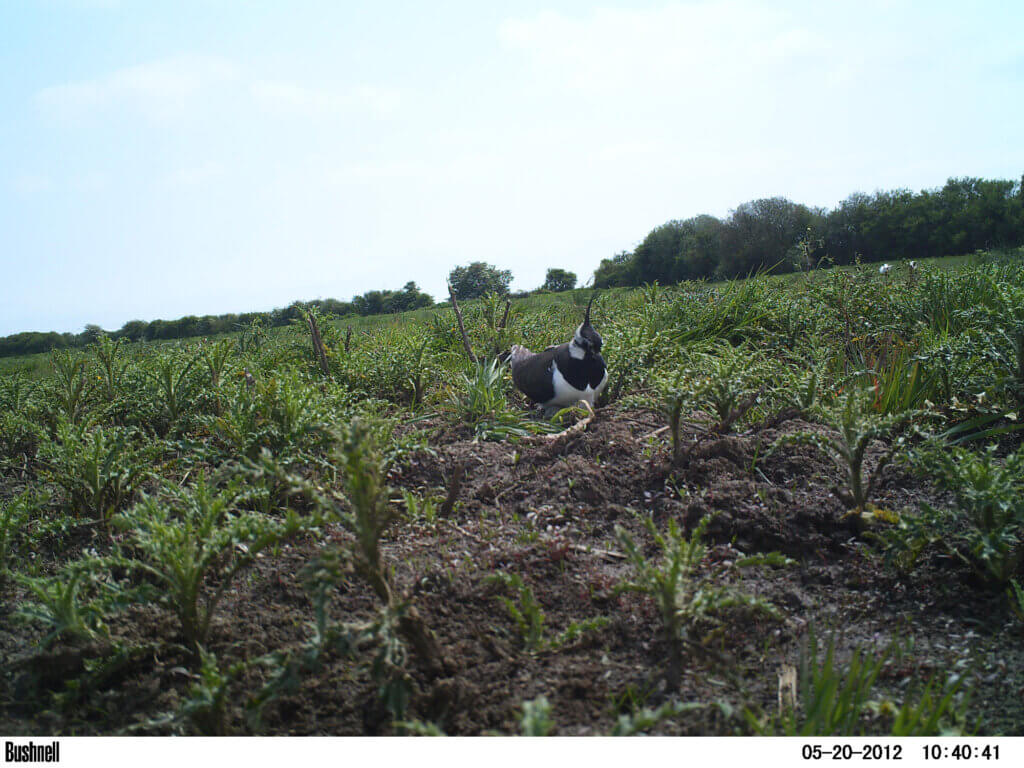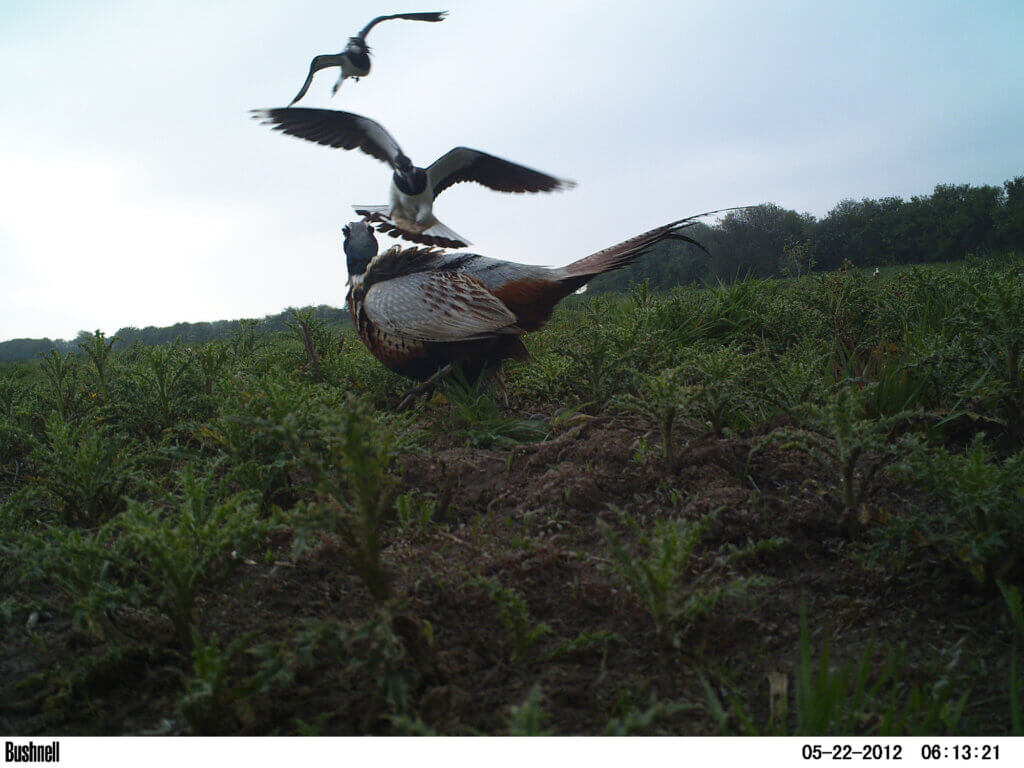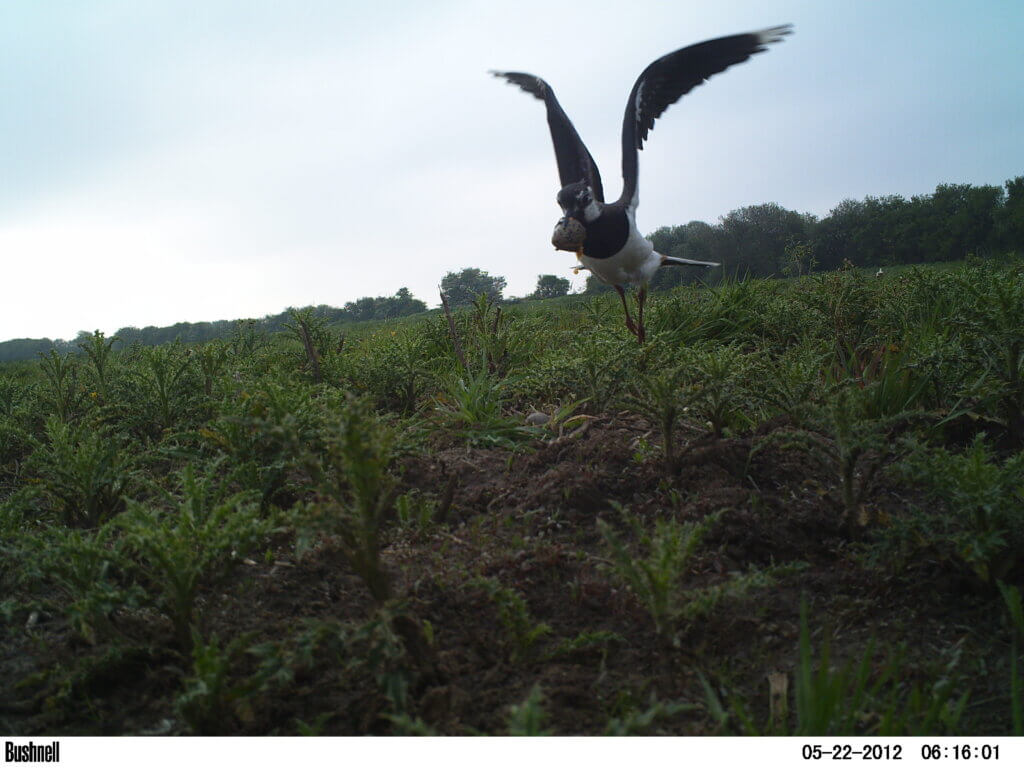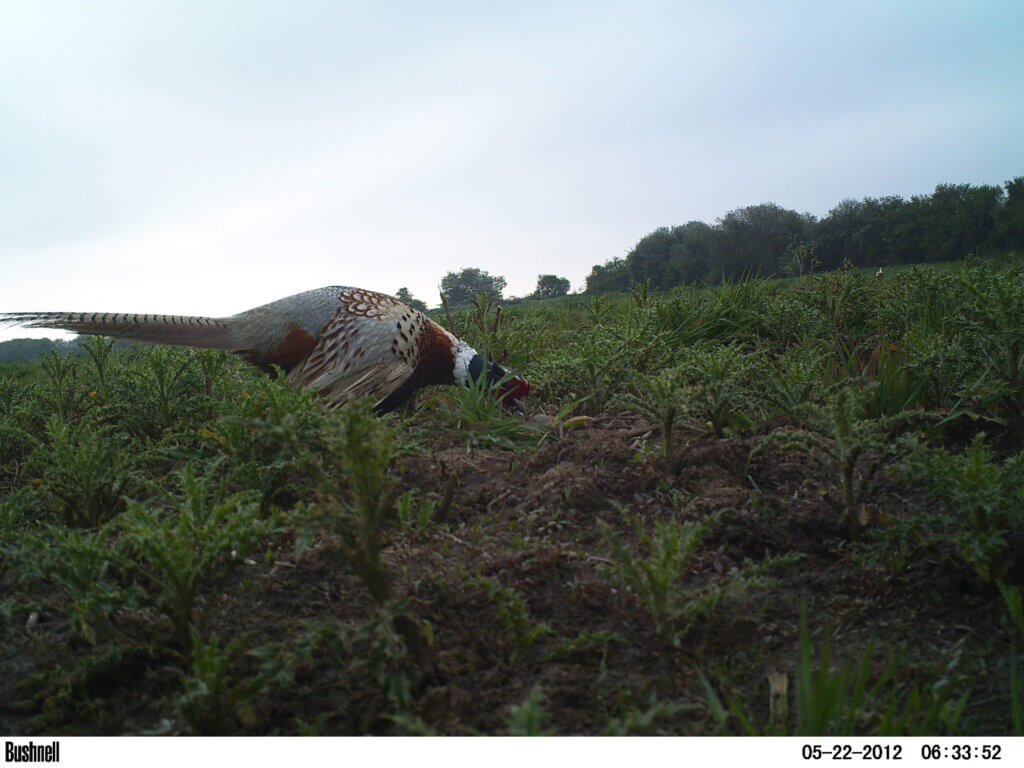A series of images that I’ve been given, apparently from May 2012. What we see is a Lapwing which looks like it might be settling on, or getting up from, a nest. Looks a bit like a male Lapwing on crest length and amount of black – but I’m no expert on Lapwings (and males do some incubating in this species).

And then, apparently at 06:13 in the morning, at the same place, a couple of days later, there’s a rather attractive cock Pheasant apparently being mobbed by two Lapwings. Great photo!

And then, two and a half minutes later, a Lapwing is flying off with what looks like a Lapwing egg in its beak and there even appear to be some drops of yellow yolk-like liquid dropping out of the eggshell.

And quarter of an hour later that (same?) cock Pheasant is having another close look at the area where the Lapwing was sitting.

What do you think was going on here?
[registration_form]
Prediction: Pheasants eat more waders than ravens.
Sure you have proof of that
Not possible to have proof of a prediction.
Research it and find out.
Null hypothesis: ravens take more waders than pheasants do. Get GWCT on the case.
A Pheasant doing what long ago a grouse head keeper, now no longer with us, told me they do. It was why he used to instruct his three u8nder keepers that all Pheasants on the moor in spring should be shot because they eat grouse eggs as well as wader eggs.
Something to be borne in mind when discussing the effects of Pheasants on native wildlife as this is not an unusual event.
But surely pheasant was out of season? Not shooting birds illegally?
Of course if they were on the General Licence – to kill, or take for the conservation of fauna….
Bimbling when was the last time a keeper obeyed all of the law? Yes they were out of season and provided the food for decoys in Larsen traps and bait in Crow cage traps. I know that this was not the only estate in the area ( Yorkshire Dales) where this instruction was the norm.
One fine day a very crafty old Rook found a fresh Pheasant at one of his favourite roadkill locations. He chased all the other Rooks and Jackdaws away. He carefully pecked away and enjoyed all the meat.
He retained the feathered pelt to disguise himself as a Pheasant. With the new Pheasant identity combined with his savvy, he knew he would now get away with doing things that he had only rarely thought of – things that usually gave humans an excuse to kill him. And he had often wondered what Plovers eggs tasted like…
Perhaps “The Disliker” can share their old “country wisdom” with us, and explain, in their best Jack Hargreaves style, what’s really happening in these shots (Oops! I forgot that the very mention of the word shot/s gets them more than a bit aroused!).
No? Come on, don’t be shy. I’m sure we’d all like to benefit from your vast rural knowledge and experience.
I like the story, but I’d have thought the main character would have been a carrion crow, given his behaviour?
Agreed Bimbling, but let us assume the Crows have already been “controlled” in this area. Also as this seems a genuine set of images, it was a nod to the dodgy mocked-up video of Rooks taking eggs from active nests earlier this year.
Ahh, I see. Waay too clever for a Bimble like me
In the 4th image, isn’t there an egg immediately to the right of the pheasant’s bill tip? It’s also there in the 3rd image, before the pheasant came back.
Obvious! . . . Them rare corn fed lapwings a feisty lot! Better looking hogging the camera. Then photo bombed his close up and nicked all his corn. He just checking to see if they have left him any. Obviously not so he took his revenge. . . Isn’t that young adder next to that nest sniggering to? He gets about a lot! Poor old pheasant! Got a bum deal last week now in a scramble with egg on his face. Maybe? It ok though he’s not doing bird for long, and being a young first offender, with (some say) a bad up bringing he might get a death sentence as the pen is to full. That’ll teach him! . . . Apparently even if caught on camera like his dodgy mates rook, jay and magpie who he is trying to copy there is no (“scientific”) evidence he has any effect on lapwing or other birds. Adder said the same in pheasants defence. . . Bambi can have the same habits and likes the camera to. But as he’s cute, fluffy, knows Santa and not the centre of attention he gets away with so much more!
In other news.
To many twitchier, lock down travellers coming to Suffolk! Dingle marshes special! Seeing lesser yellow legs (another first for me) GOOD! Some traveling over 2.5hrs from (higher tier) midlands to see them BAD! Dunwich stand off! Least you kept the police occupied while the others got away. You and others missed the snow buntings.
Beware the Ivy Insect Activist!
A wildlife artist (who once pulled a noted wildlife campaigner out of icy Norwegian waters) saw a pheasant eat a lapwing chick in spite of ten adult ones trying to drive it off, so no great surprise they’ll eat their eggs as well. How long before we can put ultra mini cameras on pheasants and get a pheasant eye view of what they get up to? Until then what would the legalities and practicalities be of collecting roadkill pheasant and examining their crop, gizzard and stomach contents to analyse their diet? Perhaps DNA sampling could be used, it’s amazing what they’re achieving with it these days. Given the rarity of many native species and the vast numbers of pheasants dumped on them it wouldn’t take that many positive identifications of lapwing or sand lizard to indicate pheasants are having a serious negative effect.
Another wee point is that as they are receiving supplementary feeding pheasants can depress the populations of other species in a way that native predators and omnivores can’t. If that’s a valid point it’s another one that needs to be put to the public. I’ve certainly heard credible accounts of certain butterfly caterpillars and pupa being eaten out by pheasants. If we finally get the fully comprehensive and objective study on pheasant impacts we should’ve had years ago then the always dubious claims of pheasant shooting’s conservation value will be ground into dust. I wonder what Lord Beefy has to say about how these photos fit in with his latest Telegraph feature’s sentiments?
Woodlark and Nightjar Recreational Disturbance and Nest Predator Study 2008 and 2009, Dr Paul M Dolman University of East Anglia included one instance of a Woodlark nest which was predated by a Pheasant.